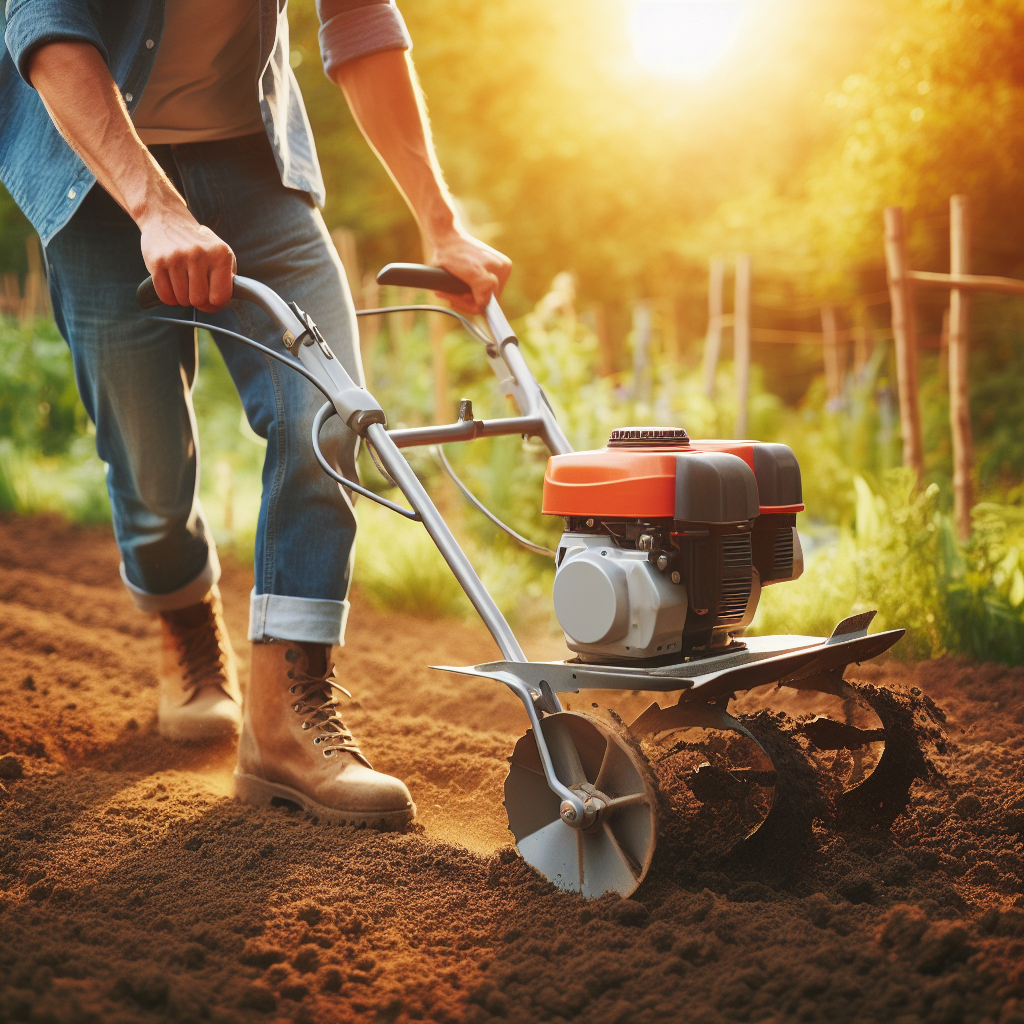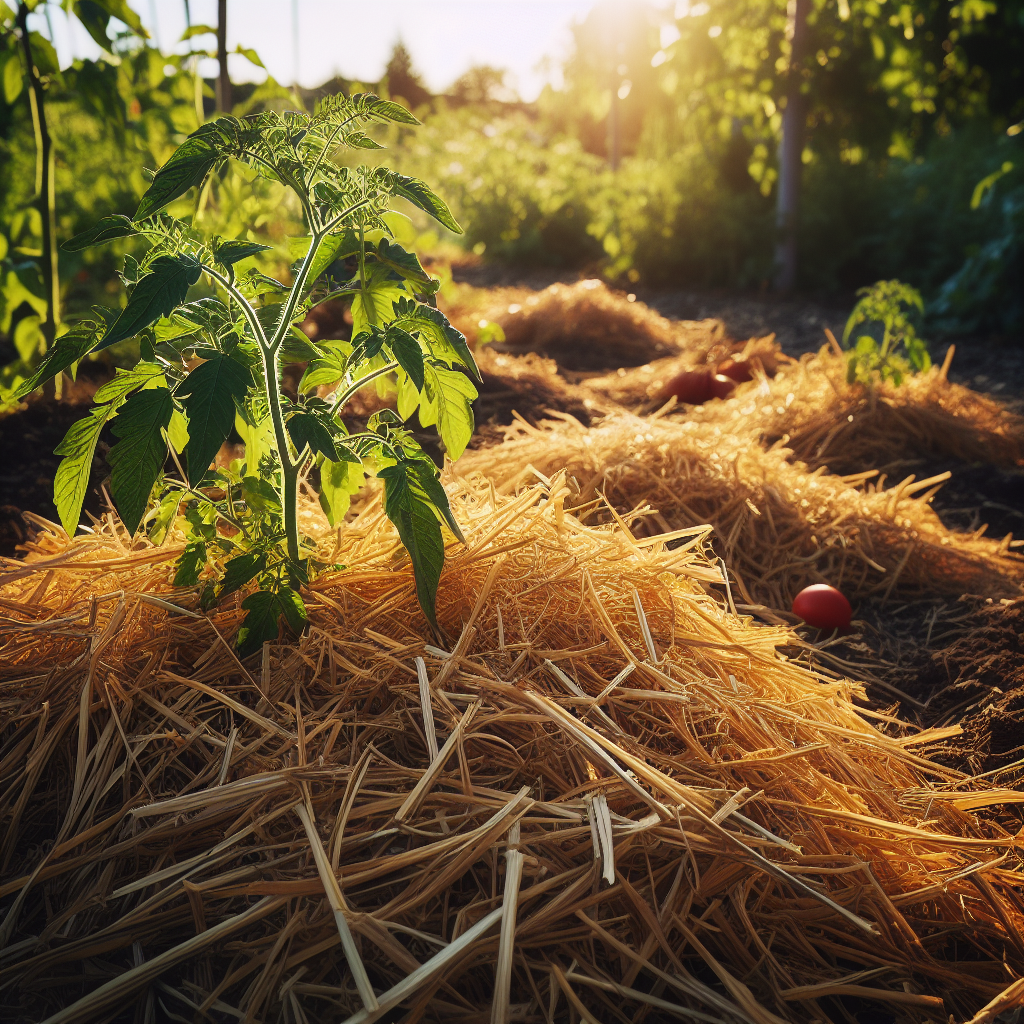No-Till Gardening Techniques for Healthy Soil
Tilling might seem like an obvious gardening task, but the truth is that all that digging destroys soil structure and health. For rich, alive soil, try no-till gardening techniques instead to grow gorgeous gardens without all the back-breaking work.
Tilling leads to poor soil health
What’s wrong with tilling?
Tilling damages vital soil structure, harms beneficial organisms, leads to compaction and organic matter depletion, and escalates runoff and erosion – a cycle likened to giving the soil a regrettable "bad haircut" repeatedly.
The Problems with Tilling
1. Damage to Soil Structure:
When we engage in the act of tilling or turning over the soil, it disrupts the intricate architecture of the soil. This structure is essential for a healthy and thriving garden ecosystem. Tilling breaks down the naturally occurring aggregates and disrupts the arrangement of soil particles.
2. Harm to Beneficial Organisms:
Beneficial fungi, microbes, and worms are vital to healthy soil. They play crucial roles in nutrient cycling, aeration, and overall soil health. Unfortunately, every time we till, it's like sending an eviction notice to these beneficial organisms – they get disrupted and, in some cases, killed.
3. Compaction Over Time:
Soil compaction is a silent menace that creeps in over time with repeated tilling. As we disrupt the soil structure, it compacts, losing its natural porosity. Compacted soil makes it harder for roots to spread and for water to percolate through, creating an unfavorable environment for plant growth.
4. Depletion of Organic Matter:
Valuable organic matter, the lifeblood of fertile soil, takes a hit with each round of tilling. Organic matter contributes to soil structure, water retention, and nutrient availability. Tilling accelerates the breakdown of this precious organic matter, leaving the soil less rich and vibrant.
5. Escalation of Runoff and Erosion:
Tilling sets the stage for a drama featuring runoff and erosion. The disruption of soil structure leaves it more susceptible to the erosive forces of wind and rain. Without the natural structure, the topsoil, rich in nutrients, can be carried away, leading to a loss of fertile ground.
6. Soil's Bad Haircut Analogy:
Comparing tilling to giving your soil a bad haircut paints a vivid picture. Just like a poorly executed haircut can leave you with regrets, tilling repeatedly leaves your soil in a sorry state. It's a cycle of disturbance that hampers the soil's natural beauty and potential.
No-till gardening protects your soil’s structure and preserves the vibrant ecosystem within it.
The Benefits of No-Till
No-Till Reduces Compaction and Improves Drainage
Preservation of Natural Structure:
By not tilling, we allow the soil to maintain its innate structure. This natural arrangement of soil particles and aggregates creates a conducive environment for plant roots and essential soil organisms.
Enhanced Porosity for Proper Drainage:
By not disturbing the soil, the spaces between soil particles remain open, promoting proper drainage. Water can percolate through the soil more effectively, reducing the risk of waterlogging.
Prevention of Dense Compaction:
Compaction, the enemy of a healthy garden, is thwarted by the no-till approach. Traditional tilling leads to the compression of soil particles, resulting in dense compaction over time. No-till practices ensure that the soil maintains its natural fluffiness.
Root and Worm Penetration:
One of the perks of a non-compacted, well-structured soil is the freedom for roots and worms to roam. Roots can spread more easily, allowing plants to establish stronger and deeper root systems. Meanwhile, worms, nature's soil engineers, can navigate through the soil, enhancing its overall health.
Mitigating Soil Erosion:
The preservation of natural soil structure not only aids drainage but also plays a role in mitigating soil erosion. Non-compacted soil, with its intact structure, is less prone to erosion caused by wind and rain. This contributes to the conservation of topsoil and its valuable nutrients.
Roots can penetrate deep into non-compacted soil
2. No-Till Increases Moisture Retention in the Soil
Intact Fungal Networks for Moisture Management:
No-till gardening preserves fungal networks within the soil. Fungi play a crucial role in creating hyphal structures (Hyphae are the branching, filamentous structures produced by fungi) that act like a natural network, aiding in water absorption and retention. By avoiding disruption through tilling, these networks remain intact, allowing the soil to efficiently manage moisture.
Organic Matter's Role in Moisture Absorption:
The organic matter present in the soil acts as a sponge for moisture. Traditional tilling accelerates the breakdown of organic matter, reducing its water-holding capacity. No-till practices, on the other hand, ensure the preservation of organic matter, creating a reservoir that helps the soil absorb and retain moisture, especially during dry periods.
Mulch as a Moisture Conservator:
No-till gardeners often apply organic mulch like wood chips, straw, or compost to the soil surface. This protective layer serves as a shield against evaporation, reducing water loss from the soil. Mulch also acts as an insulator, preventing rapid moisture evaporation in sunny and hot conditions.
Resilience in Drought Periods:
The combination of preserved fungal networks, organic matter, and mulch creates a resilient soil structure. During drought periods, when water is scarce, the no-till garden is better equipped to withstand the challenges. The soil's enhanced ability to absorb and retain moisture becomes a lifeline for plants, ensuring they have access to the water they need to thrive.
Conserving Soil Moisture for Plant Health:
Moisture conservation is not just about quantity; it's about ensuring that the water remains available to plant roots when they need it. No-till practices contribute to a consistent and well-managed soil moisture level, promoting optimal conditions for plant growth and health.
Sustainable Water Management:
No-till gardening aligns with sustainable water management practices. By reducing the need for frequent irrigation and conserving moisture naturally, it minimizes the environmental impact associated with excessive water use.
3. No-Till Minimizes Weeds by Blocking Light
Mulches block light from reaching weed seeds and seedlings, suppressing germination and growth. Less tilling also brings up fewer weed seeds.
Mulching suppresses weeds
4. Saves time and labor
No tilling reduces compaction and weed issues, so less overall digging and maintenance is needed.
Ready to ditch the tiller for good? Here are some simple no-till techniques for your garden.
No-Till Basics
The core of no-till gardening is disturbing the soil as little as possible.
Follow these guidelines:
Never till or turn the soil
Tilling destroys soil structure and fungal networks while exposing weed seeds. Avoid tilling and use no-dig methods instead.
Apply mulch to suppress weeds and retain moisture
Organic mulch like wood chips or hay blocks light to prevent weed seeds from sprouting. It also insulates soil, conserves moisture, and adds organic matter as it breaks down.
Plant directly into the soil through mulch layers
Sheet mulching and lasagna gardening allow you to plant right through the mulch layers into the soil below without having to dig or till first.
Easy No-Till Methods
Here are some simple no-dig methods perfect for new gardeners:
Sheet Mulching:
Cover beds with newspaper or cardboard topped with organic mulch like wood chips, shredded leaves, hay, or compost. Wait 2-6 months for materials to break down before planting.
No-Till Raised Beds:
Build framed raised beds directly on grass or soil without digging. Fill with purchased soil mix and grow intensively.
Ruth Stout Method:
Apply 8-12 inches of organic mulch over soil. Pull mulch back to plant into soil and replace around plants.
Lasagna Gardening:
Build up beds by layering cardboard, compost, manure, shredded leaves, grass clippings, straw, and topsoil. Plant directly into beds.
Use a Dibber for Easy Planting:
A dibber is a hand tool used to poke holes in mulch and soil for planting seeds or transplants without digging.
To use a dibber:
Push the tip straight down through mulch layers into undisturbed soil.
Wiggle tool slightly to create a wider hole if needed.
Drop in seeds or insert seedling roots fully into hole.
Fill in around plant and firm soil lightly.
Dibbers allow precise planting while keeping soil intact. The narrow holes disturb very little of the soil ecosystem. The handles provide leverage and make it easy to poke through tougher materials.
Dibbers come in a variety of shapes and sizes. Simple wooden dowels or sticks can also work.
Go Till-Free
Any garden can benefit from no-dig practices - just start small! Tiny efforts like planting with a dibber and using mulch make a big difference. With time, you can grow healthier, more productive gardens while protecting your soil. Happy Gardening!
Explore More Gardening Tips:
The Ultimate Guide to a Lush Garden Oasis
Discover the overall benefits of maintaining a lush garden oasis for a thriving outdoor space.
How to Start a Vegetable Garden in 5 Easy Steps
Learn the basics of starting a garden, a perfect complement to your no-till gardening journey.
Supercharge Your Soil: Worm Castings - Nature's Fertilizer
Dive into enhancing soil health with the power of worm castings, a valuable addition to no-till practices.
A Look into Sustainable Gardening Practices
Explore sustainable gardening practices and how they align with the principles of no-till gardening.




